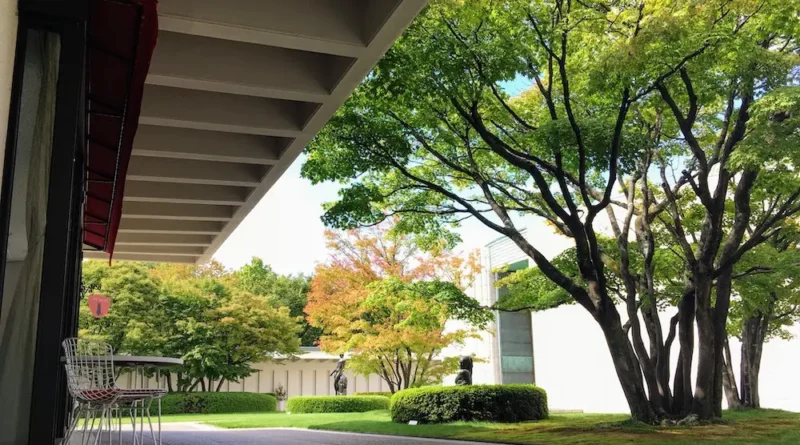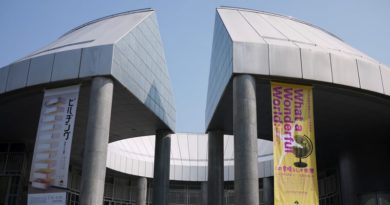Hiroshima Museum of Art
Monet, Van Gogh, Picasso, and more works by great modern European artists are on display at this pleasant city center museum. And there is a good chance you will have them almost to yourself!
Hiroshima Museum of Art is a private museum, established in 1978 by Hiroshima Bank to commemorate the 100th anniversary of its foundation. Its collection is divided between about 90 modern European paintings by many well-known artists, and about 90 works by modern Japanese painters in the Western style.
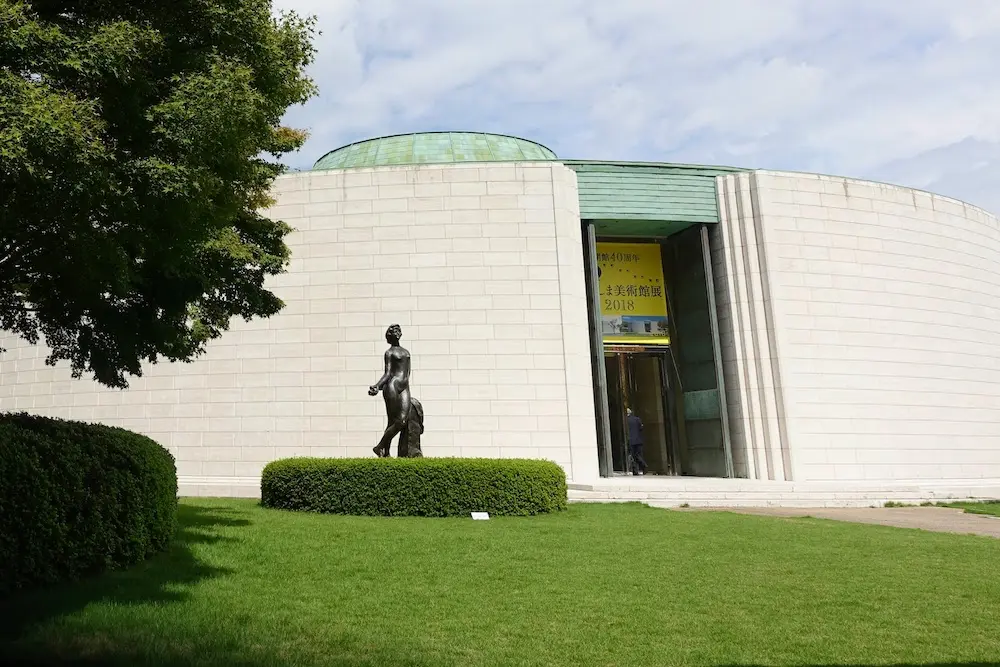
European collection
With its European collection, although focusing on the Impressionists, the museum aims to provide an overview of the 150 years of modern European painting from French Romantic period to the Ecole de Paris.
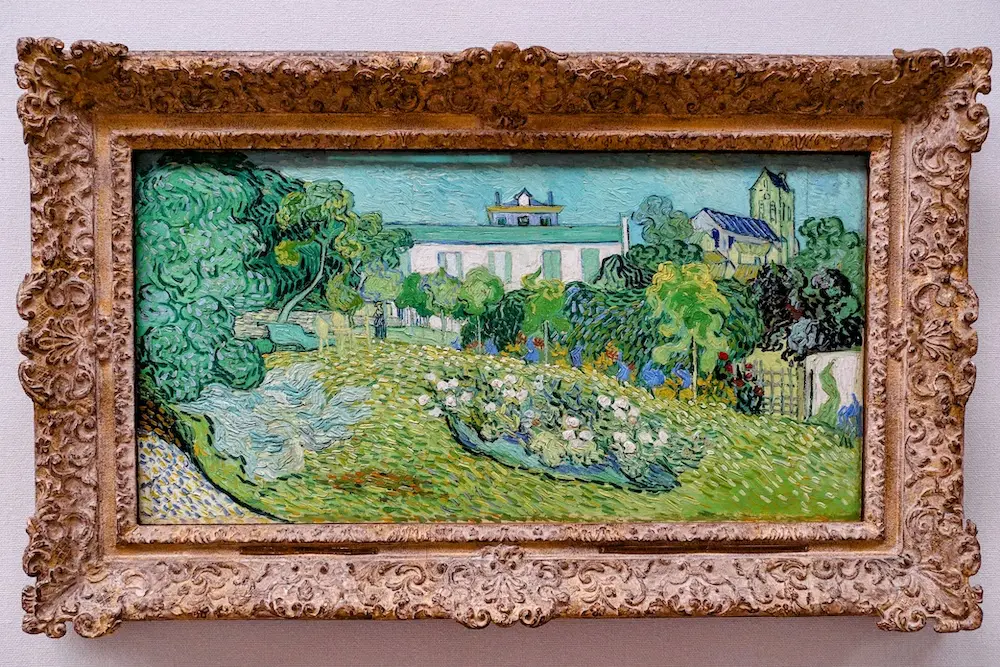
Just about all of the 90 paintings are by well-known artists, including Delacroix, Courbet, Corot, Manet, Monet, Renoir, Degas, Toulouse-Lautrec, Rousseau, Cézanne, Gauguin, van Gogh, Matisse, Picasso, Braque, Utrillo, Chagall, and Modigliani. There are also several pieces of sculpture.
The museum owns eight paintings by Picasso which cover the artist’s career from 1900 through to 1970, and one of three versions of Daubigny’s Garden painted by Van Gogh in the final months of his life.
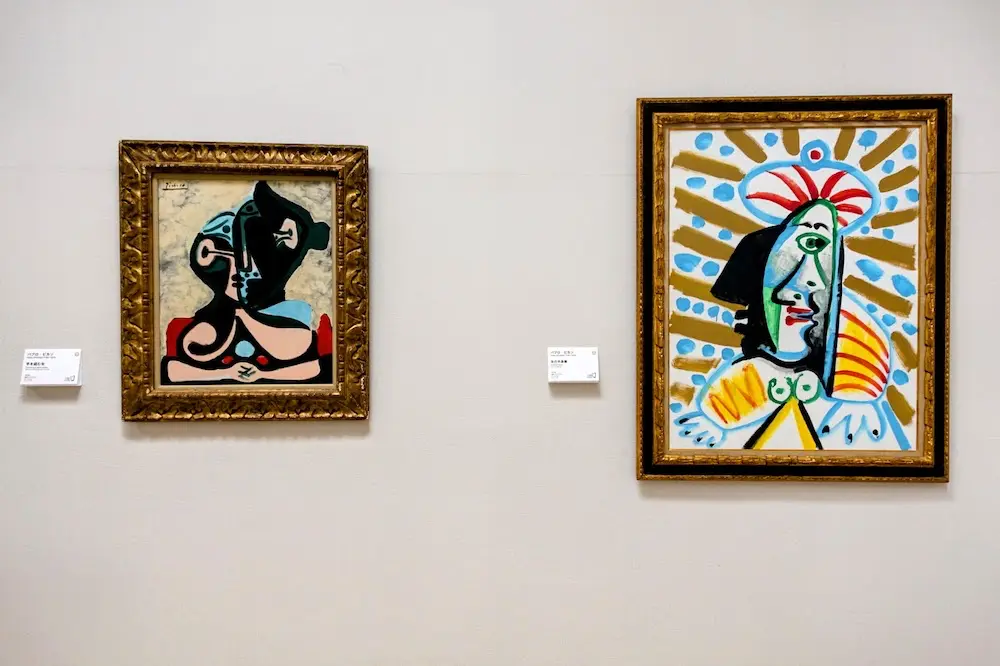
My personal favorites are the paintings by Soutine and a study from Rodin’s controversial Monument to Balzac and a maquette of the The Burghers of Calais.
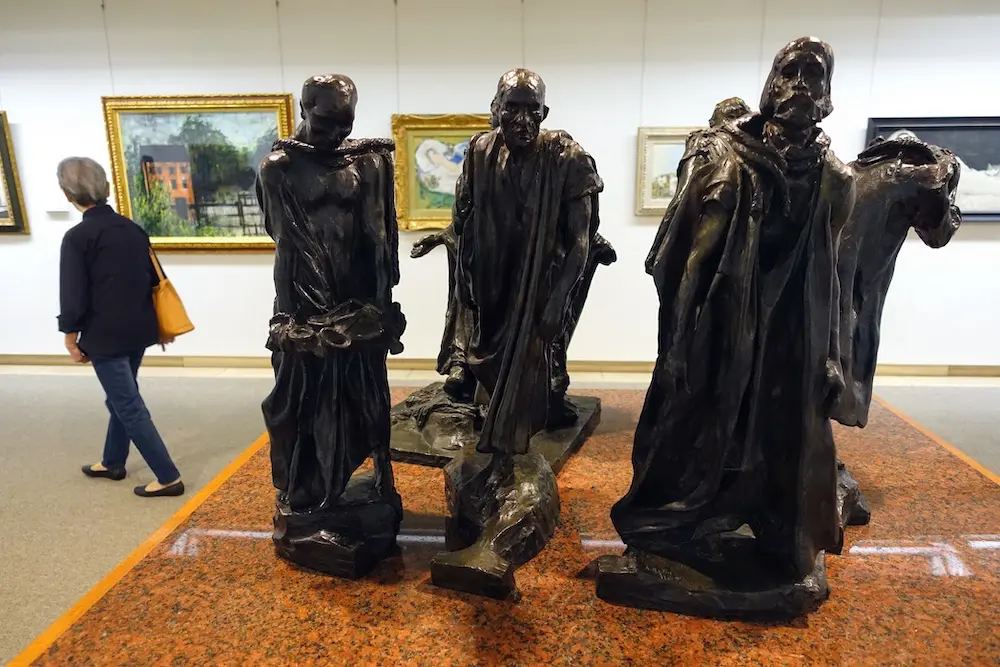
Japanese yōga collection
The other half of the collection displays about 90 examples of yōga Western style oil paintings by Japanese artists from its beginnings in the late 19th and early 20th century to the present.
These include works two of its leading exponents Kuroda Seiki and Kishida Ryusei. Several special exhibitions held throughout the year (the price of admission to apecial exhibitions also includes admission to the permanent collection).
A tour of the Hiroshima Museum of Art
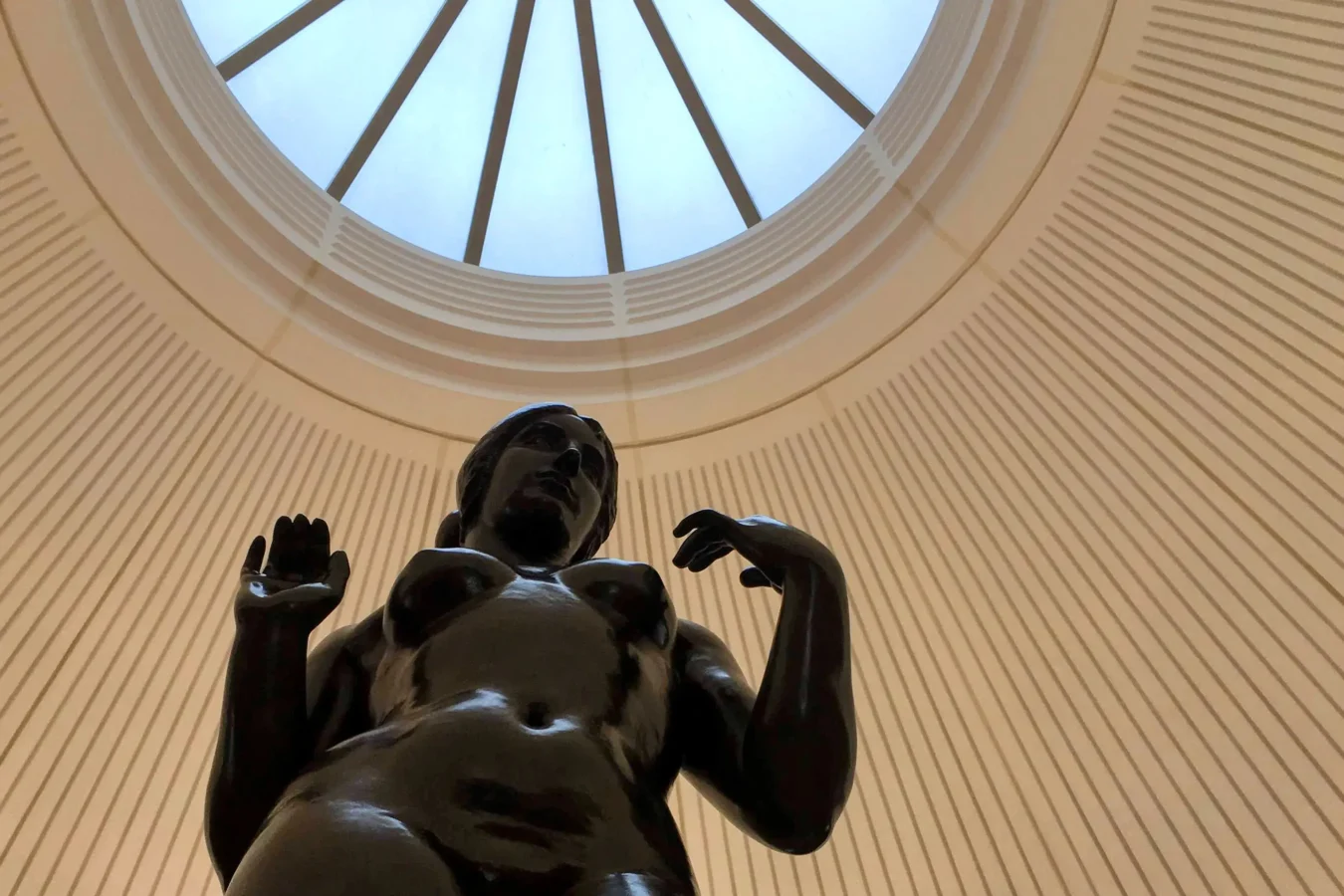
Small and manageable, a visit to the Hiroshima Museum of Art provides an excellent opportunity (especially if you go on a weekday) to view works by some of the world’s greatest painters at a relaxed pace free from crowds.
The European art is displayed in the museum’s distinctive round building (described by one author as, “Like a muffin”) in the center of a walled compound, which lies beyond the museum foyer and gift shop.
On entering the building, you find yourself in a kind of circular courtyard, in the center of which stands a bronze statue of Venus by Maillol, bathed in natural light coming from a glass cupola set into the top of the domed ceiling.
On the walls which encircle the central space are some lovely sketches, also by Maillol. From here, you take your pick of the four galleries which also encircle the central area.
My most recent visit was on a weekday afternoon at a time when was no special exhibition showing. There were only only two or three other visitors in the museum, so we each had a room of our own, so you can really take your time and get up close to the works of art on display.
Hiroshima Museum of Art welcome photography
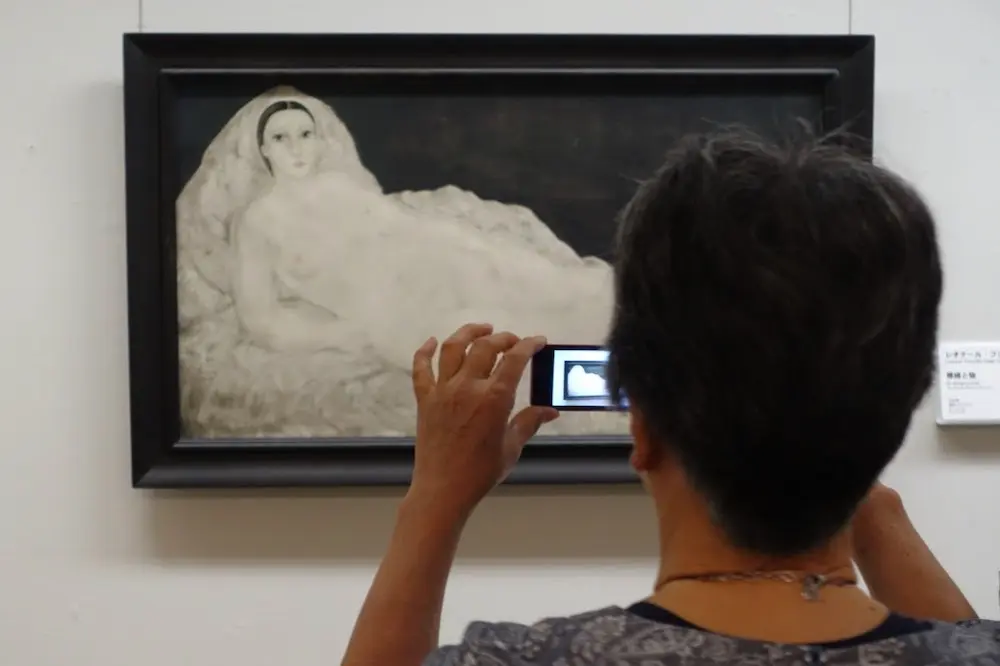
You can view more examples of works in the Hiroshima Museum of Art collection here. Somewhat unusual in Japan, Hiroshima Museum of Art allows visitors to take photo of most of the works in its collection.
Take a break in the museum grounds
While compact, the grounds of the museum are very pleasant and there is plenty of seating from which to enjoy the greenery, which include horse chestnut trees donated by the son of Pablo Picasso’s son Claude to commemorate the museum’s opening in 1980.
Cafe de Jardin within the grounds of the museum has nice large windows with views of the garden and serves drinks and light meals. Cafe de Jardin is open to all, without need to buy a ticket to the art collections.

The “Hiroshima Effect”
Finally, Robert Ginsberg has this to say on the Hiroshima Museum of Art, which is located just a few hundred meters from where the A-bomb exploded in 1945, in his essay in Philosophy and architecture;
The art works in Hiroshima are more beautiful because they are in Hiroshima. This museum maximizes their existence as human joys. This would be a good art museum anywhere in the world. Though upon entering the museum we tend to forget that we are in Hiroshima, or even in Japan, the statue under the dome lovingly reminds us before we leave that this selection and arrangement is an achievement of Hiroshima. The museum addresses what it is to live in a city that had been destroyed by an atom bomb but which insists on its worth as civilized community. “Here in Hiroshima,” the museum says to us, “we know the value of beauty and love.”
Hiroshima Museum of Art
Opening hours: 09:00-17:00 (last admission 16:30)
Closed: Monday (except when national holidays fall on a Monday or during special exhibitions), December 29-January 2
Admission:
- General ¥700
- High School & College Students ¥400
Admission to special exhibitions varies, but usually includes admission to the permanent collection.
Check out current and upcoming special exhibitions here.
You can find a list of the museum’s paintings on load to other museums in Japanese here.
Address: 3-2 Motomachi, Naka-ku, Hiroshima-shi, Hiroshima-ken
Tel: 082-223-2530
Website: www.hiroshima-museum.jp
no images were found


